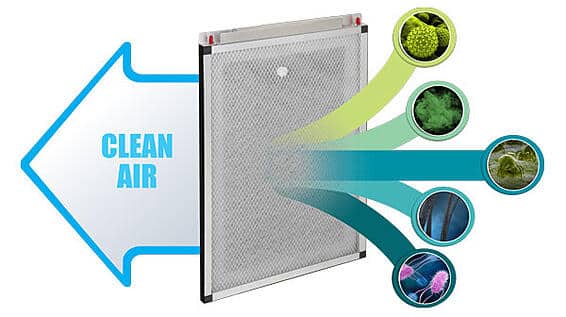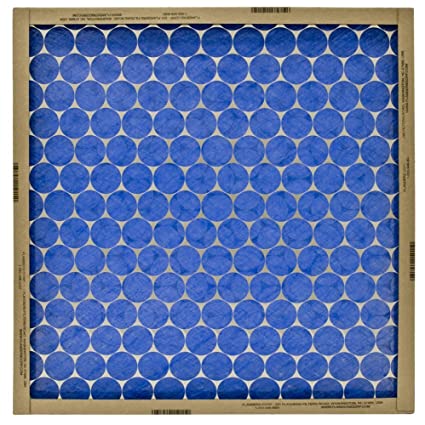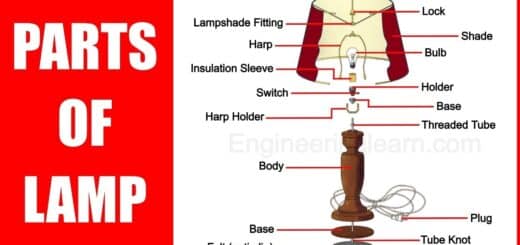7 Types of Air Filters (Home) – Pros, Cons and Sizes of Filters [Complete Details]
![7 Types of Air Filters (Home) - Pros, Cons and Sizes of Filters [Complete Details]](https://engineeringlearn.com/wp-content/uploads/2022/02/Air-Filters-1024x539.jpg)
Introduction
7 Types of Air Filters (Home) – Pros, Cons and Sizes of Filters [Complete Details] :- Indoor air quality is referred to as one of the most critical thins for every homeowner, especially if family members suffer from respiratory issues. Proper HVAC filters can mean the difference between stifling, polluted air and clean, healthy, and easy-to-breathe air.
Different Types of Air Filters
- UV light filters
- HEPA filters
- Electrostatic filters
- Washable filters
- Media filters
- Spun glass filters
- Pleated filters
Every one of these channels has its own arrangement of advantages and disadvantages, which shift in light of your objective for your home. For the most part, high-proficiency channels that are additionally financially savvy are best for homes, however different contemplations ought to incorporate whether there are pets in the home, regardless of the shape and its regularity of being changed.
Channels are likewise appraised utilizing the Minimum Efficiency Reporting Value (MERV), which was created by the American Society of Heating and Refrigerating and Air Conditioning Engineers (ASHRAE). The appraisals range from 1 to 16 and provide you with a thought of how well the channel can trap poisons that are just about as little as 0.3 microns or extensively as 10 microns along with 16 being the most appropriate.
You’ll likewise need to consider factors like the expense of the channels. To assist with social occasion data and gauge your choices, you can analyze the essential advantages and disadvantages of each channel type. How about we investigate each channel type and its attributes to limit the sorts that might be ideal for your home.
1. UV Light Filters: ( Types of Air Filters )

As their name recommends, UV channels utilize short-wave bright light to kill microorganisms and infections. UV channels are amazing for killing microorganisms that could be dangerous to your wellbeing, including mold spores.
One possible risk of UV channels is that they can change oxygen into ozone, which can be unsafe for your wellbeing. Indeed, even low measures of ozone can cause hacking and chest torment, while higher measures of it can prompt deteriorating of existing respiratory illnesses, similar to asthma.
Although UV filters are effective at removing bacteria and viruses, they are ineffective at filtering out pollutants such as dust. As a result, they’re frequently seen as part of a larger filtering system that incorporates HEPA air filters. UV light is invisible to the naked eye, and depending on the brand and type of the HVAC system, the lightbulbs should be replaced every year.
Pros and Cons Of UV filters
Pros: The UV light utilized in these channels can kill extreme poisons like form and microbes, giving you extraordinary indoor air quality to assist with forestalling sicknesses and respiratory diseases.
Cons: On top of being genuinely exorbitant to introduce, UV channels can’t free the quality of more normal poisons, similar to residue or allergens. They’re likewise incapable against gases, exhaust and tobacco smoke.
2. HEPA Filters: ( Types of Air Filters )

The US Department of Health recommends high-efficiency particulate air (HEPA) filters because they can remove at least 99.97 percent of airborne allergens and pollutants, including mould spores and dust as small as 0.3 microns. HEPA filters, which have a MERV value of around 16, offer the best protection for your home. They can eliminate even the tiniest microns of airborne particles, such as tobacco and germs, from the air.
Pros and Cons of HEPA Filters
Pros: The greatest expert of HEPA channels is the way successfully they decontaminate the air. The plan of these channels makes it ideal for catching bigger toxins, similar to pet dander and dust. These channels are likewise reasonably practical and just should be changed like clockwork.
3. Electrostatic Filters: ( Types of Air Filters )

Utilizing little cotton and paper strands, electrostatic channels make static that goes about as a magnet for dust and other airborne particles. The attraction is sufficient that it holds these particles back from spreading all through your home, settling on them probably the most ideal decision for the individuals who need a channel that can battle allergens.
A special reward for electrostatic channels is they are accessible as expendable just as reusable. At the point when it comes time to change the channels, you can choose whether to wash and reuse them or throw them and get spic and span ones.
Pros and Cons of Electrostatic Filters
Pros: These filters are some of the most cost-effective solutions on the market, whether you choose the disposable or reusable version. Reusable filters have the extra benefit of allowing you to save money by eliminating the need for replacements.
Cons: While this filter is capable of filtering minor contaminants, it may struggle with larger ones like dust or mould spores. Electrostatic filters are therefore unsuitable for those with respiratory problems.
4. Washable Filters: ( Types of Air Filters )

It is observed that there are various air filters which are available in both reusable as well as disposable versions, washable filters are a cost-effective and ecologically beneficial solution. There is only a need to pay for the first one as you can easily clean or wash after which the filter can be reused instead of buying a new one every time.
Washable filters are the channels which should be kept up with well to guarantee they fill in as they ought to. As one of the principle kinds of air channels, they accompany upkeep guidelines that ought to be adhered to. It’s vital to ensure the channel is completely dry prior to returning it to. Indeed, even a tiny smidgen of dampness left can prompt form and mold creating on the channel and being removed up high you relax.
While these channels have a low MERV rating, they are an extraordinary long haul speculation for somebody who doesn’t have solid inclinations about HVAC channel types and needn’t bother with any specialty channels.
Pros and Cons of Washable Filters
Pros: The best thing for such types of a filter is its washable property, which is likely to last for a better life of the particular HVAC system that has been installed.
Cons: There are various washable filters which continue to do their job which needs to be maintained on a regular basis in order to specifically remove as well as wash the filter and should be reinserted post complete drying. If there seems to be any failure in maintaining a washable filter then you must know that it can reduce the effectiveness, especially in case when you are rushed and reinsert it without completely drying it.
5. Media Filters: ( Types of Air Filters )

Media filters are referred to as those filters which are found performing as well as providing more benefits than standard filters with high MERV ratings. Media filters are the ones which seem to be quite easy in terms of maintenance as well as they are found being quite great for the purpose of filtering the bacteria along with all the other small airborne pollutants which can be harmful. The dirt which is found in the filter is found to be sealed inside the filter which in turn prevents it from being expelled again into your room.
Pros and Cons of Media Filters
Pros: These filters are known to be one of the most popular filters for the purpose of lower maintenance as they are found to be changed only either once or twice in a year.
Cons: Media filters are the ones which mandatorily need to be installed by the professional only, as they are ones which become ineffective when it comes to filtering the odors.
6. Spun Glass Filters: ( Types of Air Filters )

Strands of fiberglass are gone together to make this kind of channel, which is one of the most by and large saw sorts of HVAC channels. It makes for one of the most stunning AC channel types since it is smart, unnecessary and it shields compelled air systems and radiators from squander. Of the various kinds of AC channels open, turned glass is genuinely remarkable. Regardless, on the off chance that you’re looking for an air purifier, a considerably more innovative choice would be more legitimate.
These are filters that appear to be less well-known for enhancing air quality because they are not specifically intended to withstand a lot of strain. These are just intended to capture a small amount of dust and allergies. As a result, in order to improve the indoor air quality of a room or a house, these filters are not highly suggested for persons who have been diagnosed with various sorts of respiratory disorders.
Pros and Cons of Spun Glass Filters
Pros: The basic selling point for turned glass channels is their expense – they’re one of the most economical accessible. Turned glass channels are furthermore exceptional at getting and filtering late garbage, like development and clean.
Cons: Turned glass channels are found to have a modern surface region due to which they are found to lack the screening more modern toxins as compared to this. For patients who experience the ill effects of asthma and other respiratory sicknesses, this leaves them in a frail position. They additionally risk becoming stopped up and hindering wind stream, particularly in the event that they aren’t supplanted consistently.
7. Pleated Filters: ( Types of Air Filters )

Creased channels are otherwise called the wrinkled channels which are viewed as made of materials like polyester or cotton folds, which are two unmistakable kinds of HVAC channel materials. While they are incredible at isolating residue and other airborne poisons, they have low air filtration and are more powerless to wind current
The creases in these channels provide them an advantage over non-creased options because they increase the surface area of the channel, allowing for better separation. Channels with more creases will provide better separation than those with fewer creases, capturing even bothersome particles and toxins like pet dander and mould spores. Pleated filters are also known as creased channels which are found being available in the form of either reusable or disposable thing which is used in order to help the muffle noise from the HVAC fan.
These filters have the disadvantage of making your HVAC system work a little harder to move air through the unit, which may lead it to lose efficiency sooner than expected. Pleated filters are referred to as one of the most cost-effective option specifically for the consumers especially for the ones who are quite concerned about the indoor air quality to improve the air quality.
Pros and Cons of Pleated Filters
Pros: Besides being probably the most ideal choice with regards to catching flotsam and jetsam, creased channels are likewise excellent at getting the most garbage on account of their bigger surface region. Creased channels additionally last longer, requiring less substitutions, and the pre-owned channels can be reused.
Cons: Pleated filters have only one disadvantage: they are expensive. They are, however, an excellent method to get your money’s worth.
Sizes of Filters
Central air channel sizes are allocated by the channel’s thickness, otherwise called the profundity, notwithstanding its stature and length. There are standard sizes, however the specific channel size will rely upon your HVAC framework and its details. The most effective way to sort out what size channel you really want is to eliminate the current channel from your HVAC framework and check for its aspects on the channel outline. You can likewise allude to your HVAC framework’s client manual to observe the proper channel size.
In very important to know that in most of the cases, there are filters which are found having the thickness of 1 inch for the typical systems along with the width of 5 inches for HVAC systems. The overall dimension of the filter can range from 10 inches by 10 inches to 30 inches by 30 inches in height and length.
Some of the most common sizes are:
- 14 inches by 25 inches
- 16 inches by 20 inches
- 16 inches by 25 inches
- 20 inches by 25 inches
- 25 inches by 25 inches
Image Source :- airtecnics, billhowe, simplythebestac













